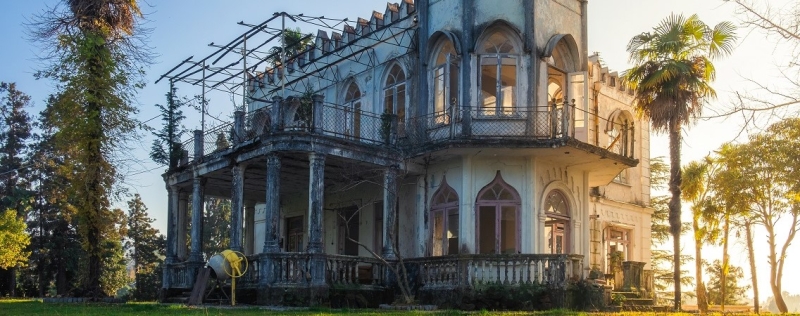
If you have already been to Tbilisi, Batumi and other popular places in Georgia, why not travel around the country along an unusual route? Our selection includes abandoned historical places that you may have discovered want to visit: resorts in the Stalinist Empire style, a destroyed cinema and a bridge-car.
How to get there
There are no direct flights between Russia and Georgia. It is most convenient to fly with transfers through Yerevan or Istanbul. To enter, Russians only need a foreign passport; they can stay in the country for 365 days without a visa. Each of the route points can be reached by car. We recommend renting a car to see as many locations scattered around the country as possible. You can start by visiting an ancient building in Tbilisi and then move to the east of the country towards the sea.
Apollo Cinema
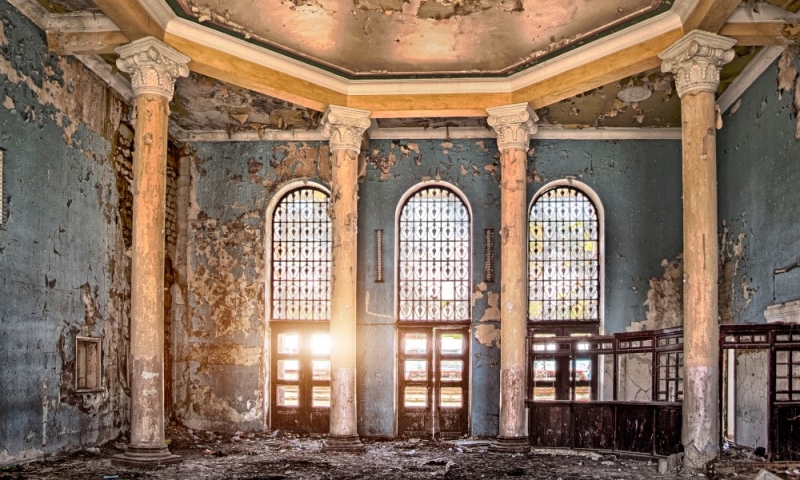
The restored facade on David Agmashenebeli Avenue in Tbilisi belongs to one of the first cinemas in Georgia. The Apollo was built in 1909 and is a fine example of Art Nouveau architecture. The ceiling is gilded, and the beautiful stained glass windows of the entrance doors create bright reflections on the floor and walls. The main decoration of the room is stucco molding of garlands and wreaths, as well as figured sculptures of animals. The pompous design and spacious hall transport you to fantasies of balls and celebrations that took place here at the beginning of the 20th century.
Where to stay in Tbilisi:
Hotel Vorontsov (rating 9.7) – from 2,900 rubles per night*.
“Factory” (rating 9) – from 3,000 rubles per night*.
Wagon bridge
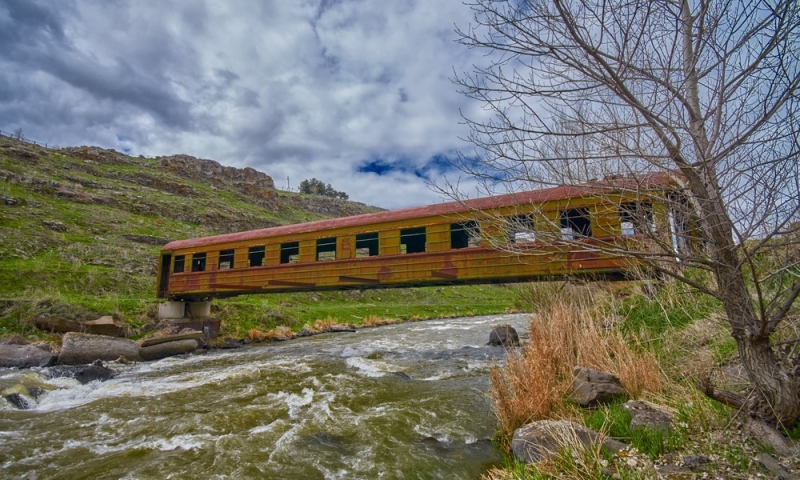
Not far from Akhalkalaki, an interesting sight awaits you: a carriage bridge spans the river. According to local residents, it appeared in the 70s of the last century. It’s worth coming here if you like train romance, stories about travel on freight trains, and unusual engineering solutions. The bridge is in a dilapidated state, so we recommend just admiring it from the side and taking atmospheric shots as a souvenir.
Abandoned sanatoriums of Tskhaltubo
Tskhaltubo is a small town 8 km from Kutaisi, famous for its healing mineral waters. Georgian kings and nobility have long come here for treatment in bathhouses. During the heyday of the USSR, the best architects of the union worked in Tskhaltubo to perpetuate the power of the empire in the majestic columns and arches of buildings. As a reminder of a bygone era, the city has preserved a whole complex of ancient sanatoriums, although some of them are completely abandoned, while others are inhabited by people.
Sanatorium Medea
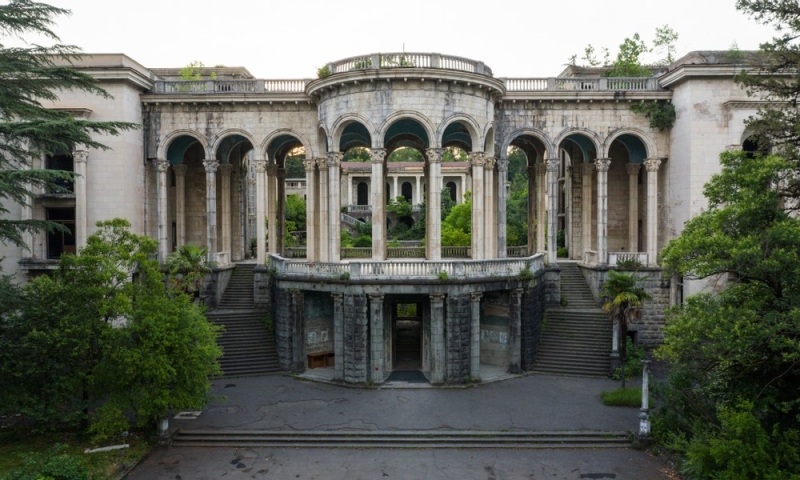
In Soviet times, employees of the Central Union, an organization that provided food to the countries of the USSR, rested here. This is one of the most beautiful sanatoriums in Tskhaltubo with free access. Locals flock here to capture wedding photos in front of the elegant building with its slender arched columns. Professional photographers photograph Gothic-style models among flights of stairs, while architecture lovers enjoy the opportunity to touch history. The building has access to the roof, which overlooks the court park.
Sanatorium Iveria
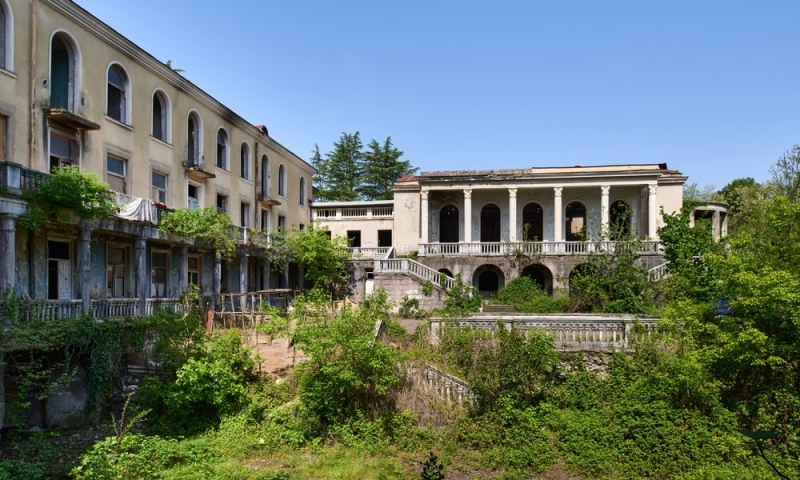
Another evidence of the scale of former luxury for vacationers. It’s hard to imagine that Iveria was just a sanatorium, because here it’s so easy to feel like you’re in a castle. They plan to restore the building, so it is surrounded by a fence and formally the entrance is closed. But it’s easy to arrange a tour with the security guard for a small fee. The main attraction is the circular atrium between the floors, which create an open, empty space in the middle of the stucco hall. There are many rooms with brightly painted walls and peeling paint, where curly ivy tries to sneak into the building through the open balconies. To hide the decline and make visiting Iveria safer, the doors to especially damaged rooms are carefully closed.
Bathhouse No. 8
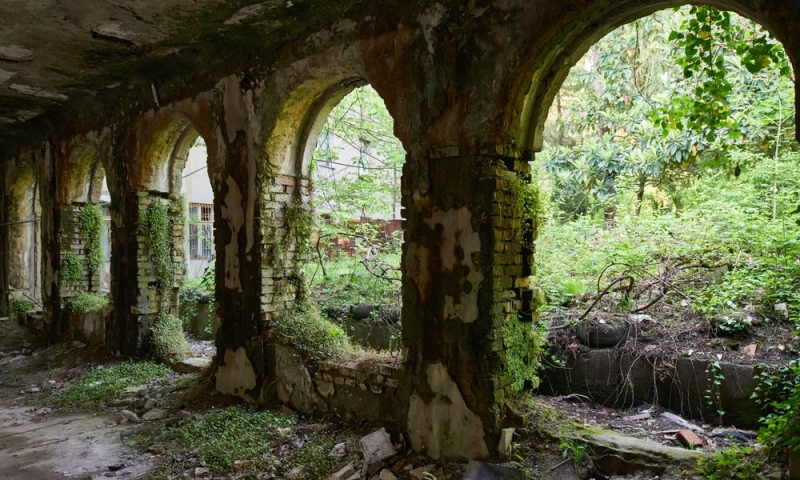
Tskhaltubo is famous for its healing springs, so, of course, many steam rooms were built here. The most unusual bathhouse No. 8: a concrete dome with an open round space makes this building look like a space dish. It takes your breath away when you imagine that they once took baths here, with water supplied directly from the fountain in the center of the room.
Where to stay in Kutaisi:
TekAtuka’s Sweet Apartment (rating 9.7) – from 6,000 rubles per night*.
Newport Hotel Kutaisi (score 10) — 5,300 rubles per night*.
House of Culture in the village of Marani
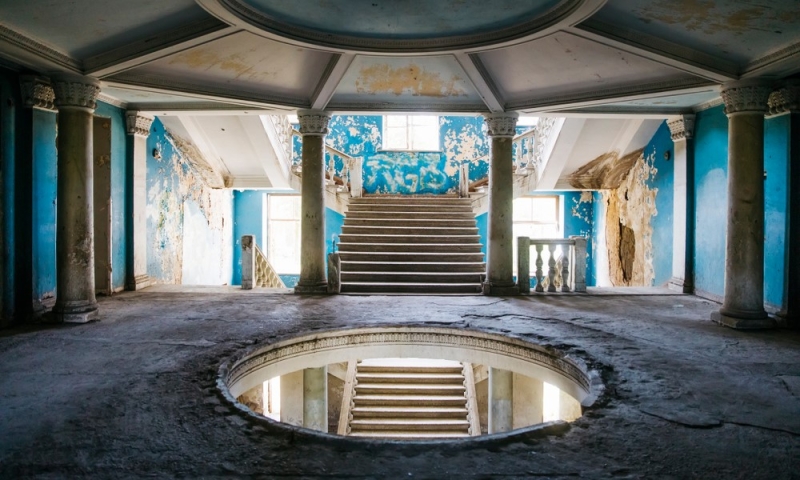
The cultural center of the village of Marani, Abashi municipality, is more than 150 years old, and all available sources indicate that it was built by Italian architects. At various times, the building managed to be both an educational center and a place of attraction for talented youth of the region – art groups were held there. Particularly impressive are the mosaics on the outside of the building, as well as the stage where theatrical performances and film screenings took place. In the 80s, the authorities carried out reconstruction and since then, bright paintings with various scenes from the life of musicians, poets and artists have been preserved on the walls.
Mengji Resort
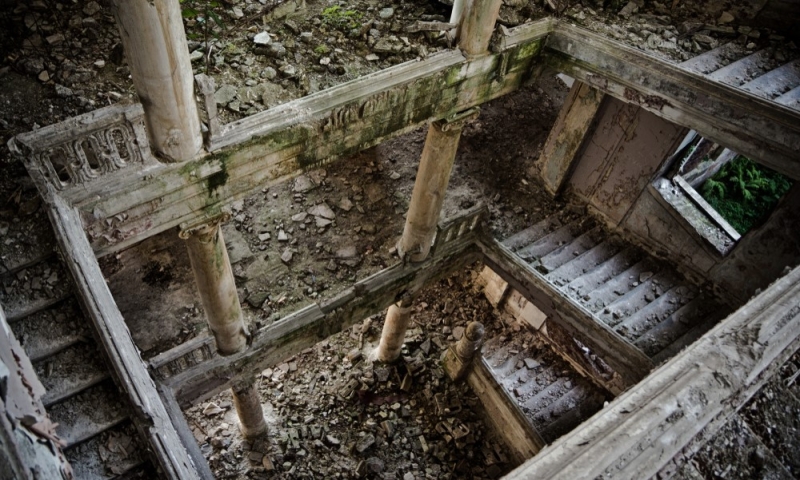
The sanatorium was once famous for its baths with healing mineral waters. This is a small building with Roman columns in the middle of the silence of the forest. The location is located away from civilization, near the town of Senaki. The centerpiece of the dilapidated sanatorium is the beautiful dome, which has been preserved and still appears in its now abandoned splendor.
Where to stay in Poti:
Claude Monet Seaside Hotel (rating 10) – from 4,700 rubles per night*.
Grigoleti Beach Resort (rating 9.1) – from 6,500 rubles per night*.
House of Culture in the village of Shroma
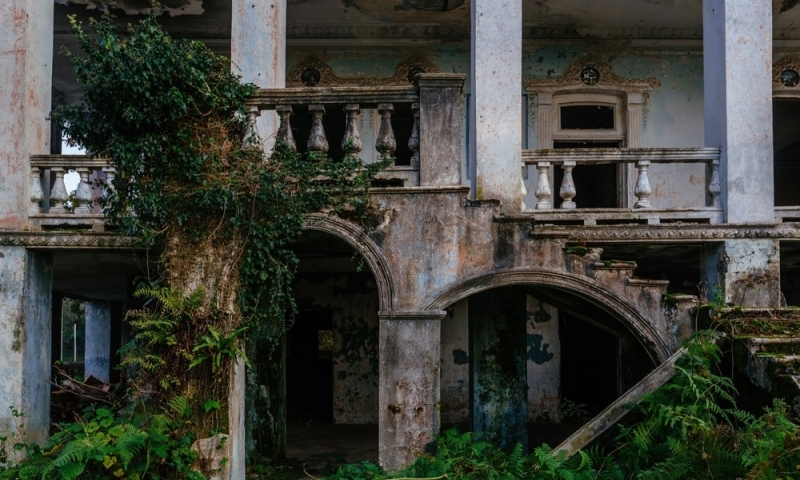
In Guria, 6 km from the sea there is once an administrative building for the village of Shroma, and later a cultural center designed for 800 spectators. There is a legend that the artist who worked on the decoration of the room depicted real people in his paintings. For two weeks, local peasants went straight from the fields to the cultural center, where he captured their appearance on the walls and ceiling of the club. Thus, the building preserved the mood and facial features of the Gurians of those years. Also on one of the floors of the building there was a museum of “Labor and Glory”, some photographs, plaster busts and other symbols of the Soviet period were preserved there.
Where to stay in Kobuleti:
- Castello Mare Hotel&Wellness Resort (rating 8.6) – from 15,500 rubles per night*.
- Kent (rating 9.4) – from 7,500 rubles per night*.
*Prices are current at the time of publication.
Looking for a site with a selection of hotels? There are more than two million accommodation properties on OneTwoTrip.

